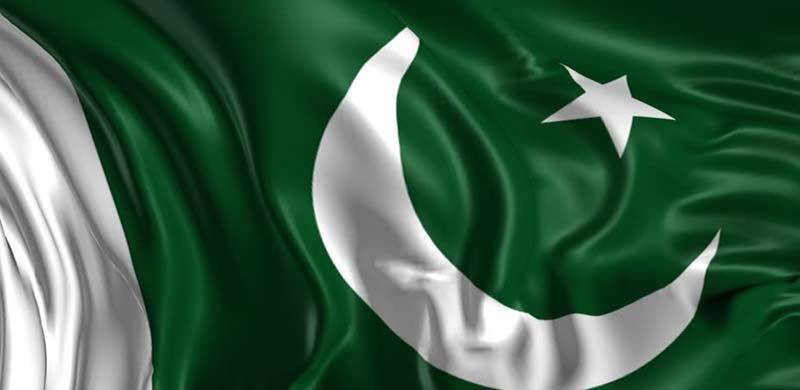
Pakistan Flag
The Pakistan flag was approved and adopted on August 11, 1947 during the session of the country’s first Constituent Assembly. The green in the flag stands for the country’s Muslim majority; whereas the thick white strip denotes rights of the country’s minority faiths. The white crescent and the star represent progress and enlightenment.[1]
The flag is a slight modification of the flag of the country’s founding party, the All India Muslim League.
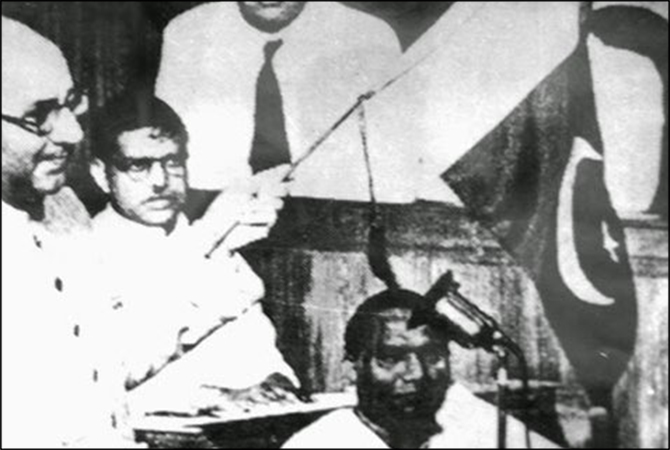
Pakistan Muslim League-Nawaz (PML-N)
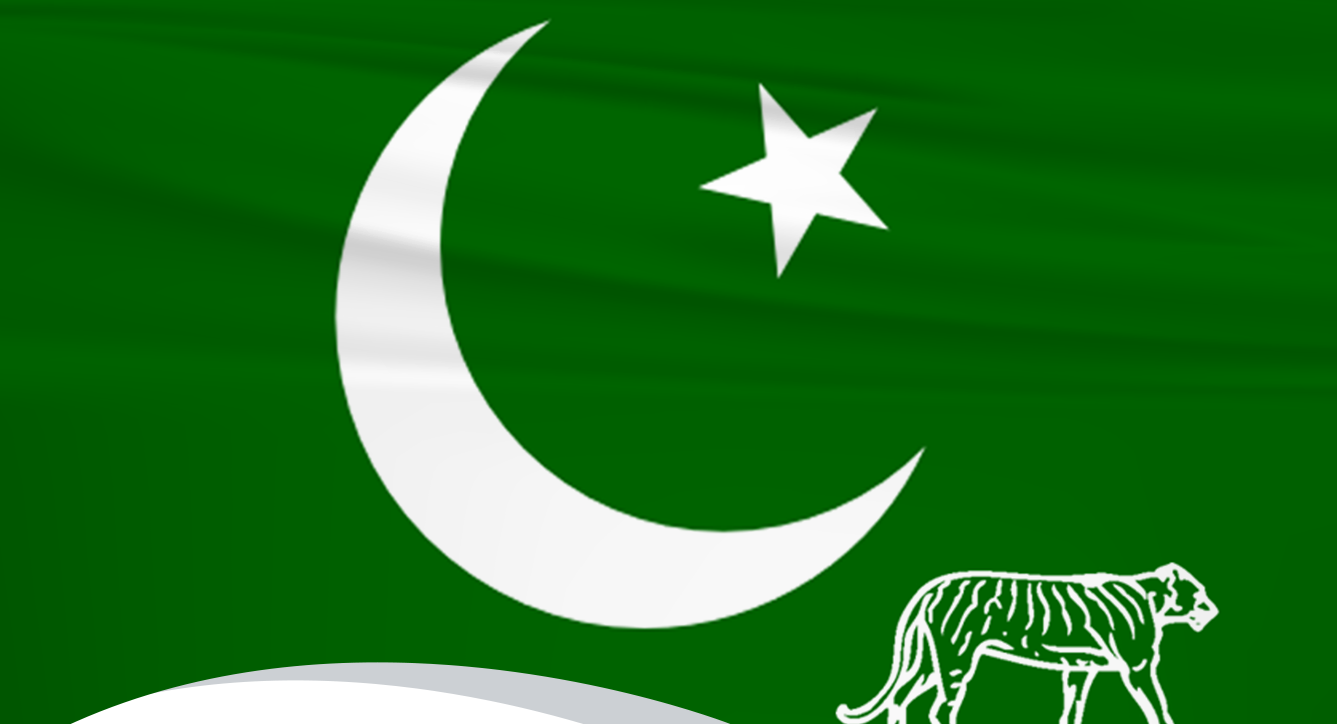
The PML-N is the largest faction of the Pakistan Muslim League (PML) which was formed in 1985 by merging numerous factions of Muslim League (ML). ML was the country’s first ruling party before splintering into many factions from the mid-1950s. In 1992, PML chief, Nawaz Sharif broke away from PML to form his own faction, PML-N.
PML, like its predecessor, ML, had adopted the flag of the All India Muslim League (all green with a white crescent and star). PML-N added a tiger to it which has been PML-N’s election symbol from 1993 onward.
The green in the flag stands for Muslim majority; the star and crescent for progress; and the tiger for nobility.[2]
PML-N has thrice been Pakistan’s ruling party and has dominated the electoral politics of the country’s largest province, Punjab, ever since the early 1990s.
Ideology: Centrist/Moderate Right.
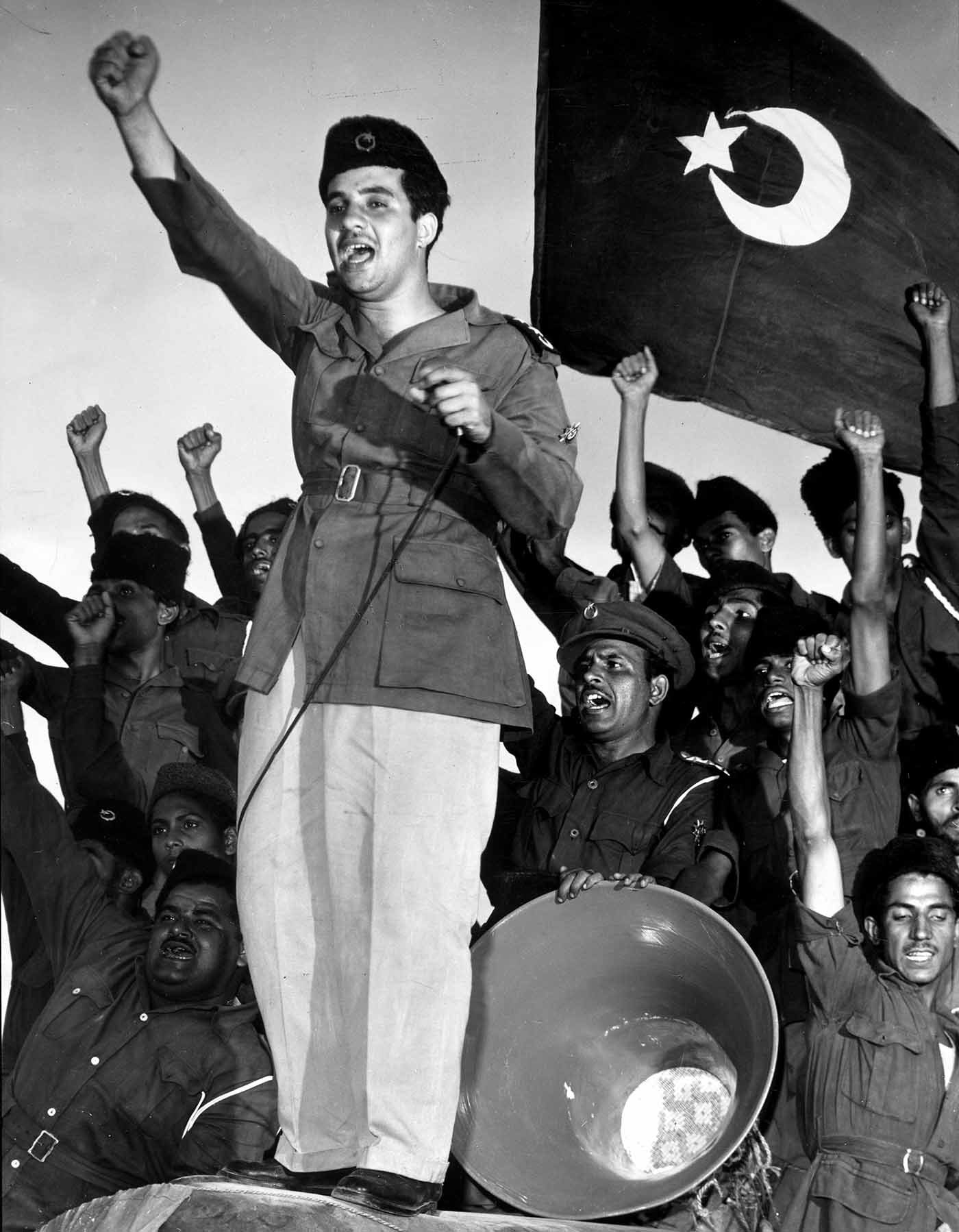
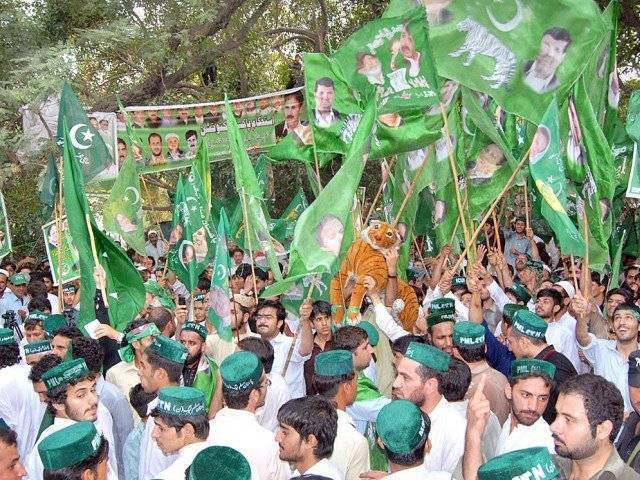
Pakistan People’s Party (PPP)
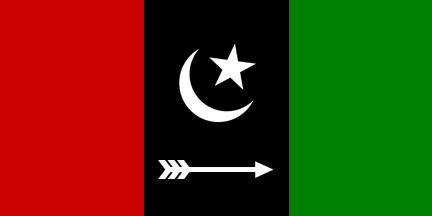
The flag was adopted in late 1967 immediately after the formation of the party. Incidentally, it looked like the flags of Afghanistan and Libya. The Libyan flag, however, was changed in 1970 by Col. Qaddafi but has made a comeback after his fall from power in 2011.
The red in the PPP flag stands for socialism; the green stands for Muslim enlightenment; and the black stands for chaos![3] According to the party, the black will be removed from the flag once poverty and injustice are eradicated from the country.[4]
A white star and crescent are placed on the black strip to symbolize light overwhelming darkness. The white arrow has been PPP’s electoral symbol since 1988. Before the arrow, it used to be a sword. The sword symbolized bravery whereas the arrow symbolizes a rapid move forward.
The PPP has been Pakistan’s ruling party four times and has dominated electoral politics in Sindh since 1970.
Ideology: Left-Liberal.
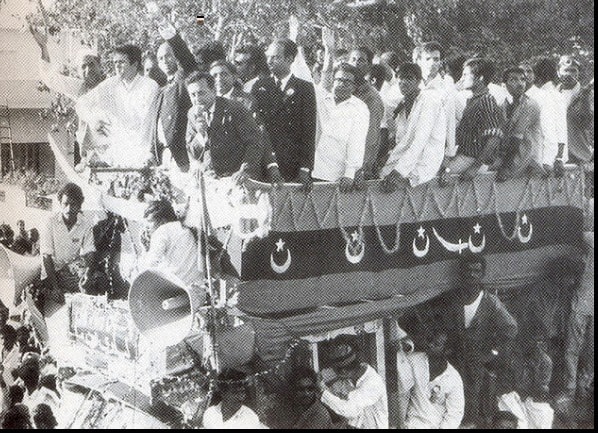
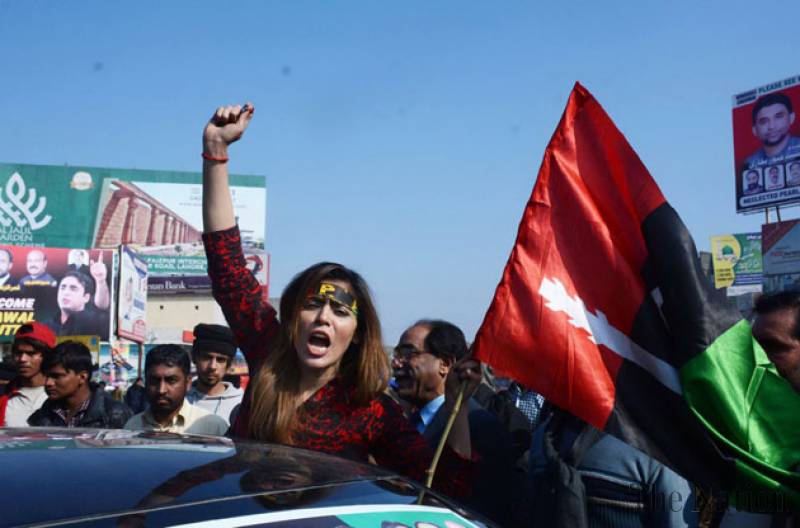
Pakistan Tehreek-e-Insaf (PTI)
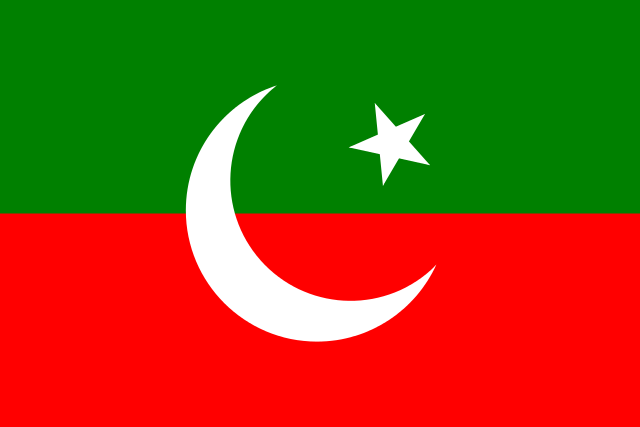
The flag was unveiled during PTI’s inception in 1996. The green in it represents the idea of Islamic welfare system and the red stands for revolutionary change. The crescent which appears on both the colours symbolizes different meanings. On green, it represents Pakistani nationalism, and on red it represent progress. The white star on green represents minority rights.[5]
PTI heads the current federal government in Pakistan. It also leads the provincial set-up in Punjab and Khyber Pakhtunkhwa.
Ideology: Centre-Right/Populist
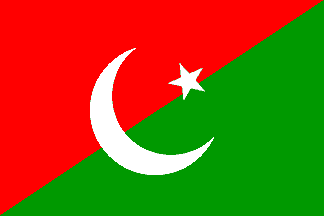

Muttahida Qaumi Movement (MQM)
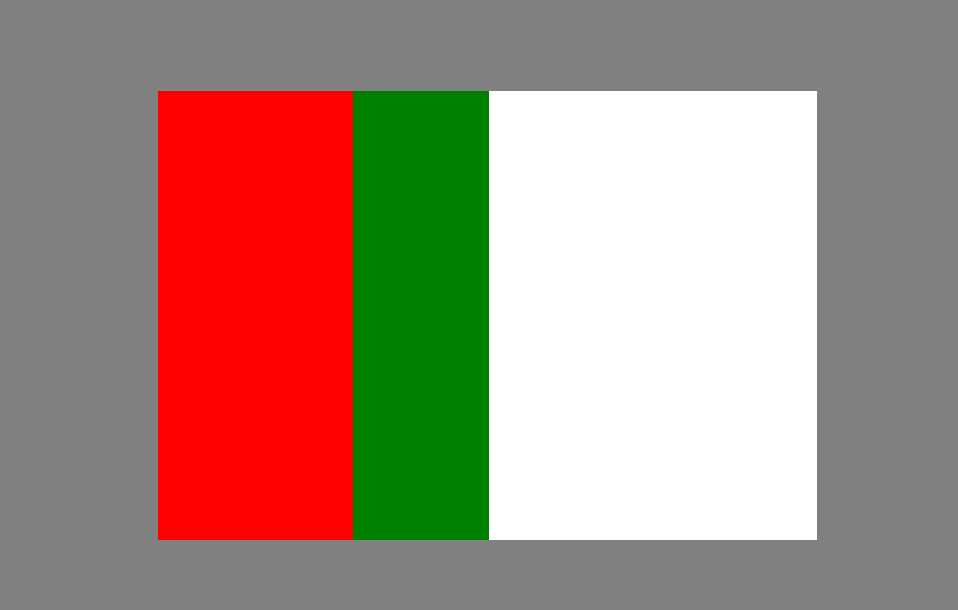
The flag was adopted from the ensign of the party’s student wing, the APMSO. APMSO was formed in 1978. MQM was launched in 1984 by APMSO’s founders. The white in the flag stands for peace. The green stands for prosperity and fertility. And the red stands for the ‘sacrifices’ of Mohajirs (Urdu-speakers) who took part in the struggle for Pakistan’s creation.[6] A kite is often placed over the white. It has been MQM’s electoral symbol since 1988. It symbolizes flight towards progress.
MQM had been Karachi’s largest party between 1988 and 2013. It experienced severe splintering from 2015 onwards. It is currently part of the PTI-led coalition government in Islamabad.
Ideology: Liberal/Mohajir Nationalism
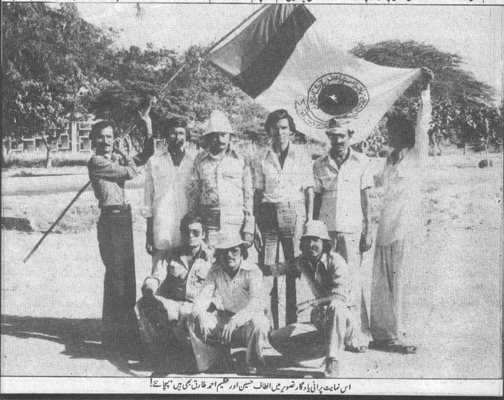
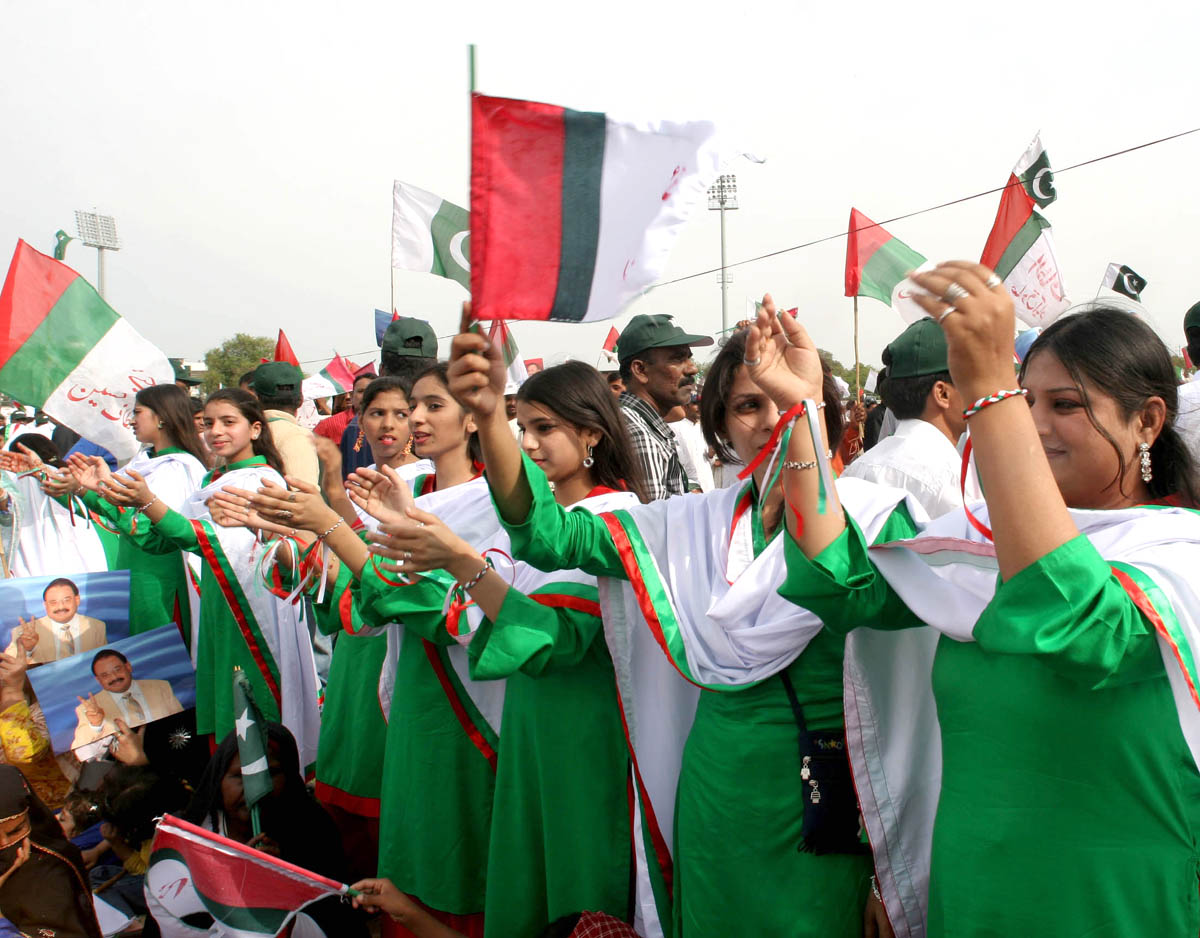
Jamaat-e-Islami (JI)
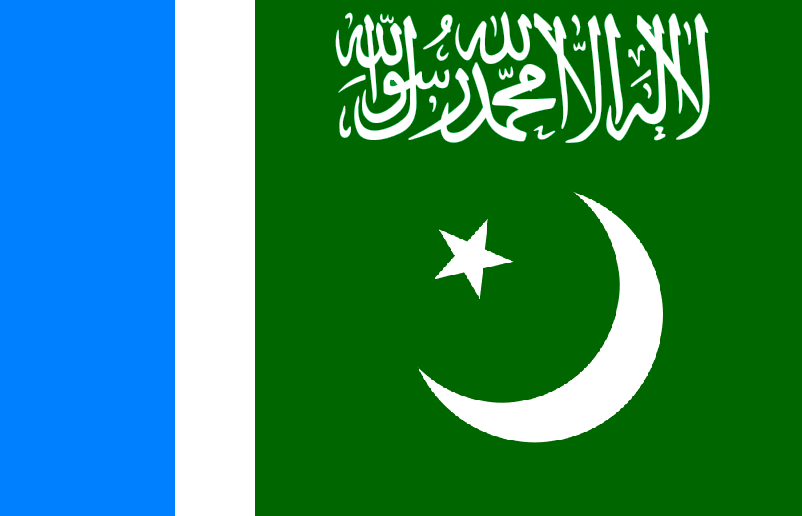
The JI was formed in 1941. The colour blue dominated its flag till the late 1970s. It stood for Islamic enlightenment. Till the 1970s it also had a red/orange strip (revolution) and a green one (Islamic order). The flag went through a transformation in the 1970s. Green began to dominate (standing for Islamic system); the red strip was replaced by a white one (connoting the party’s non-sectarian outlook); and the colour blue was partially retained. Inspired by the flag of Saudi Arabia, Islam’s first declaration of faith (kalmia) was inscribed over the green.
Ideology: Islamist.
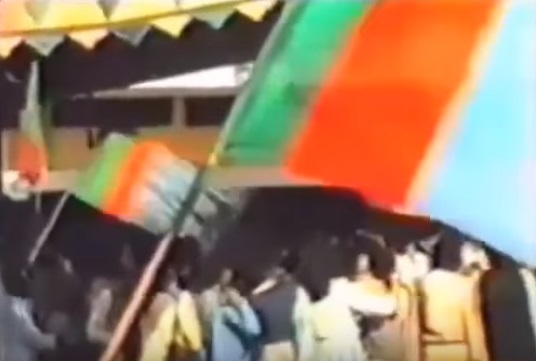

Jamiat Ulema Islam (JUI)
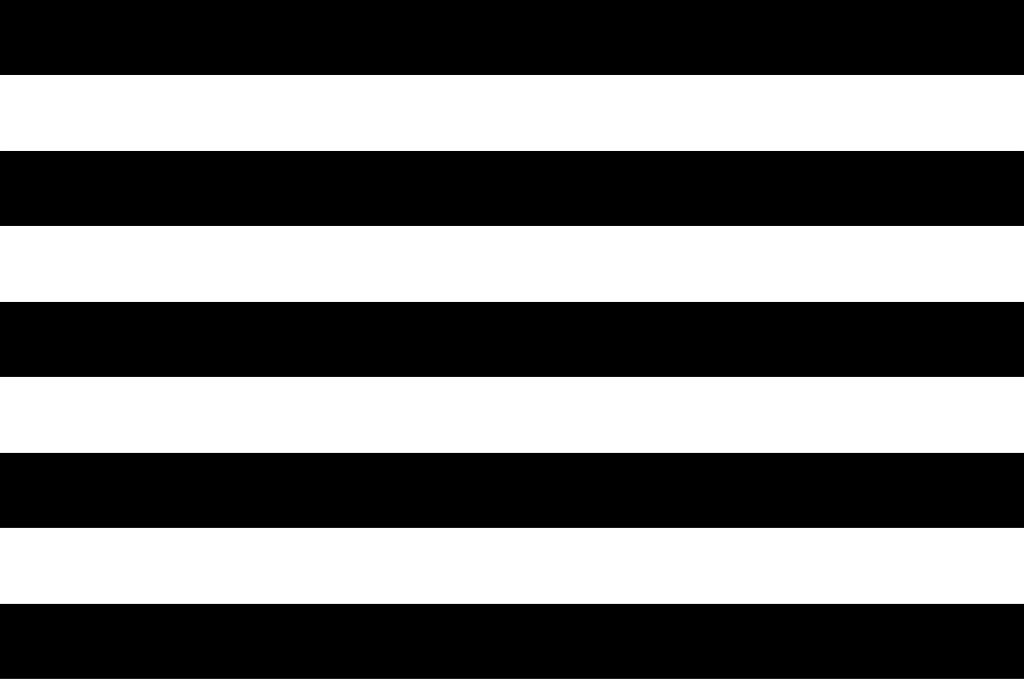
JUI explains the black and white stripes on its flag as the separation of truth (white) from false (black).[7] There are at least three factions of the JUI, JUI-F being the largest. All factions use the same flag.
Ideology: Islamist (Deobandi)
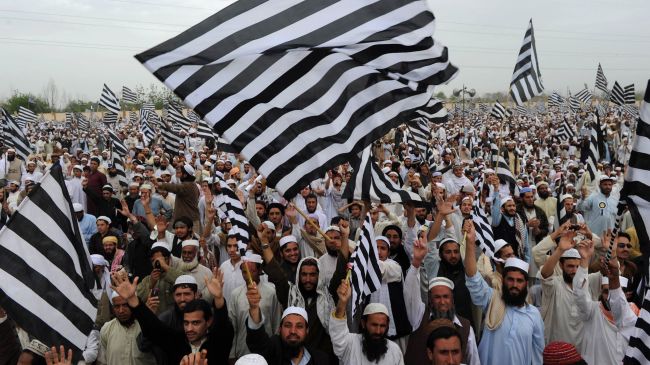
Awami National Party (ANP)
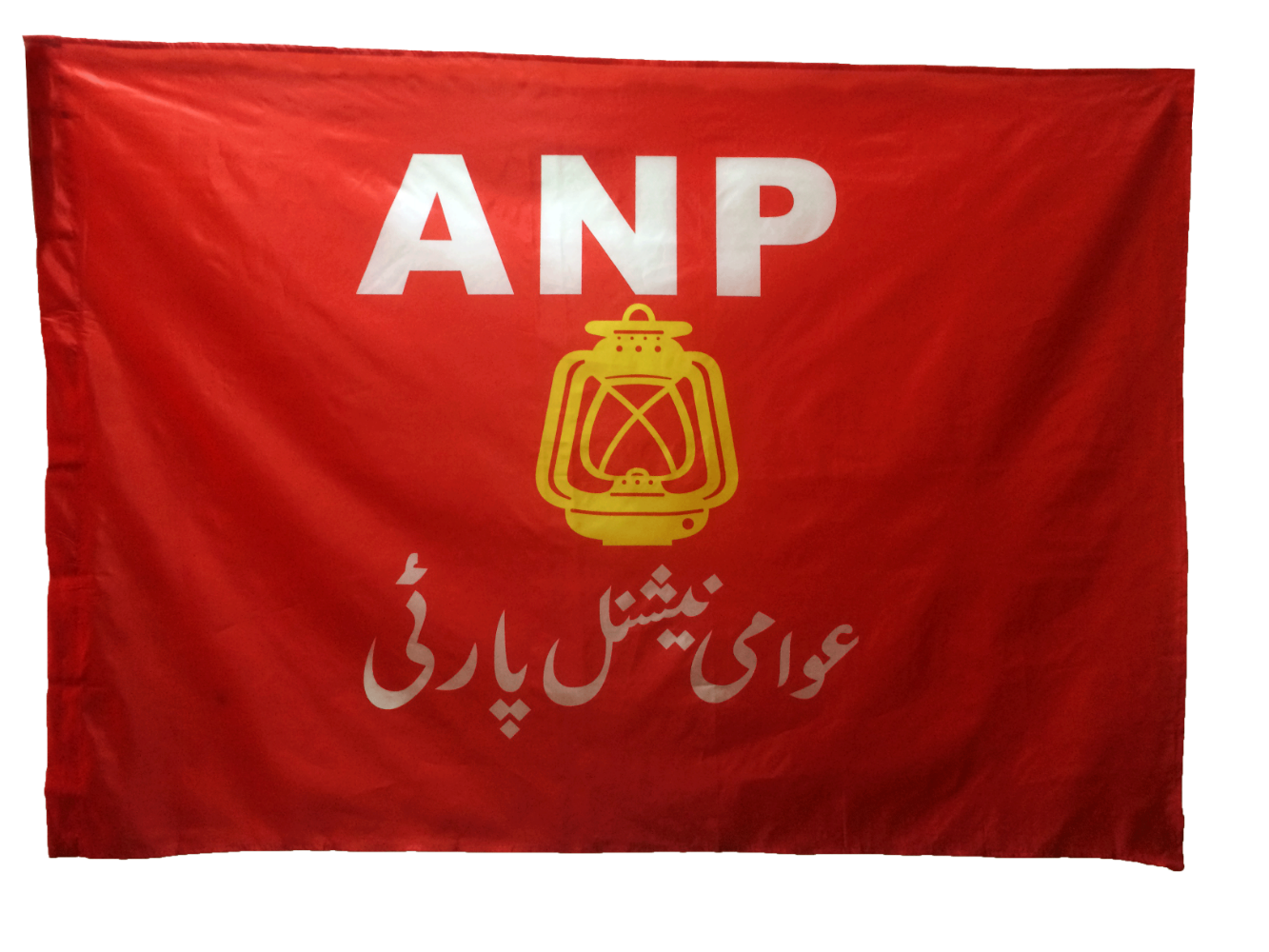
ANP was formed in 1986. It was a precursor of the National Awami Party (NAP) which was banned in 1975. Its flag is entirely red signifying progressivism. Till the 1990s it had signified socialism. Sometimes there is also the image of a lantern on the flag. The lantern is ANP’s electoral symbol. It symbolizes enlightenment.
ANP has thrice led the provincial government of the Khyber Pakhtunkhwa province.
Ideology: Progressivism/Pashtun Nationalism.
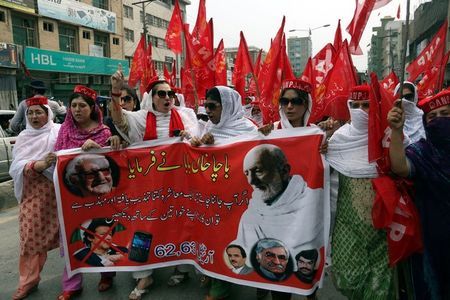
Grand Democratic Alliance (GDA)
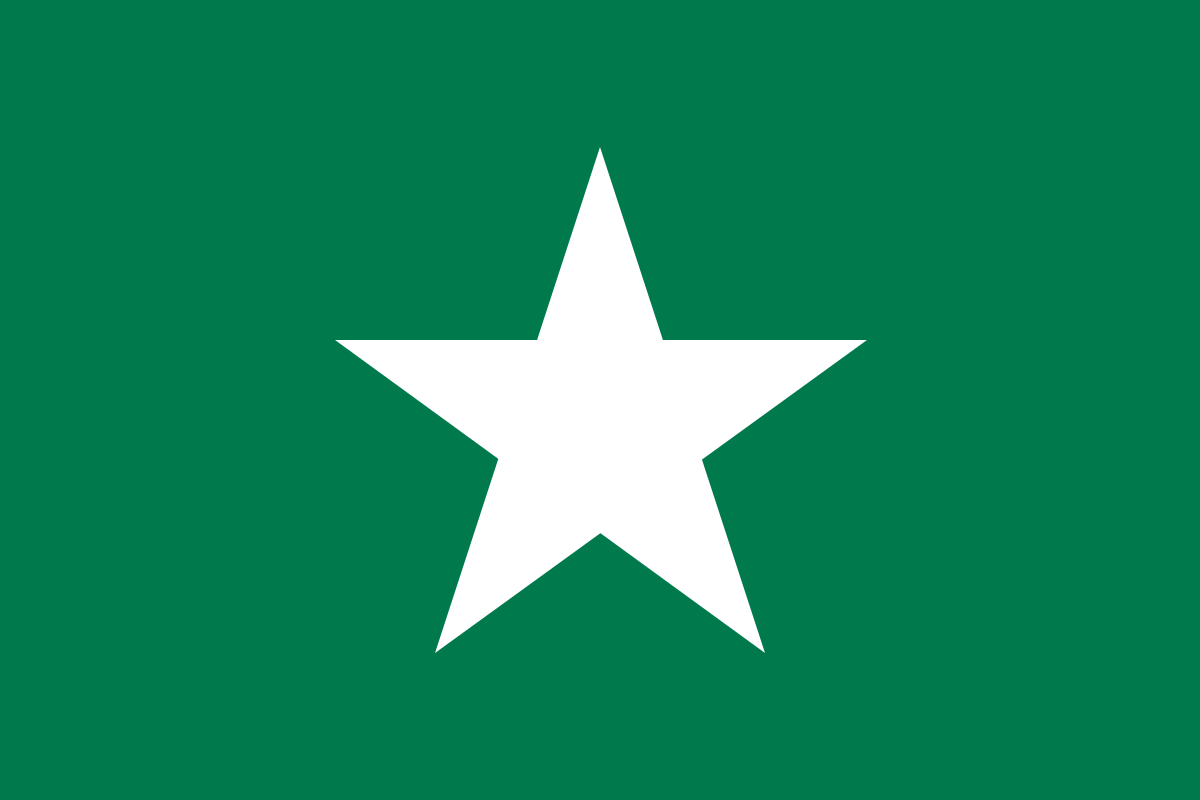
GDA is an alliance led by a faction of the PML – the PML-Functional. It is made up of PML-F and small Sindhi nationalist and other anti-PPP parties in Sindh. The green in it stands for Pakistani nationalism whereas the white star denotes the unison of various parties that are part of GDA.[8]
GDA is part of the current PTI-led coalition government.
Ideology: Moderate Right.
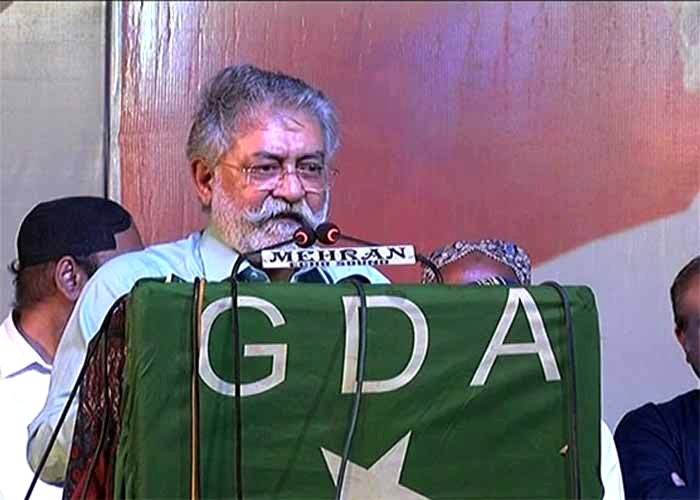
Balochistan National Party (BNP)
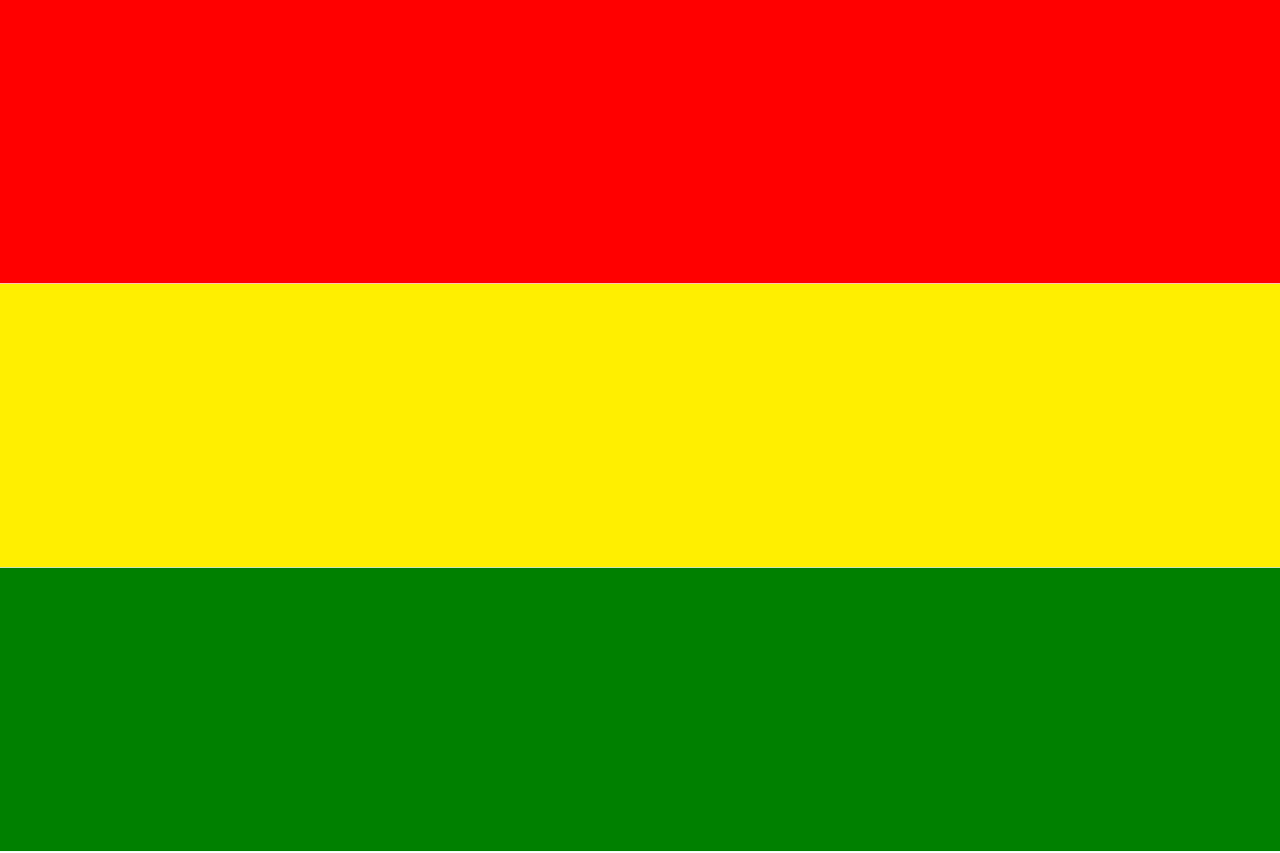
Formed in the late 1990s, the red in BNP’s flag denotes Baloch nationalist struggle; the yellow stands for Balochistan’s natural resources; and the green symbolizes economic prosperity.
BNP led the Balochistan provincial government in the late 1990s. It is a partner in the current Balochistan provincial government, albeit a disgruntled one.
Ideology: Progressivism/Baloch Nationalism
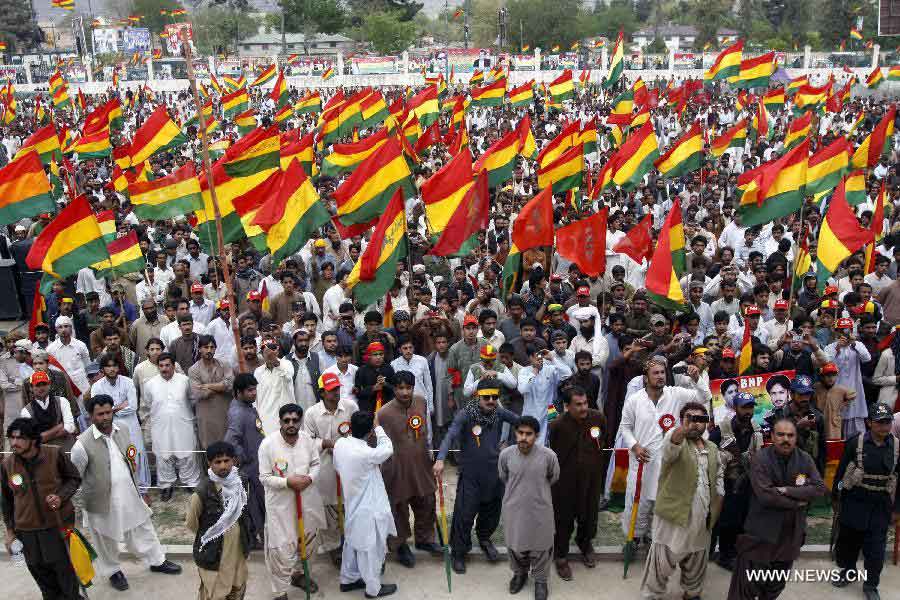
Pakhtunkhwa Milli Awami Party (PkMAP)
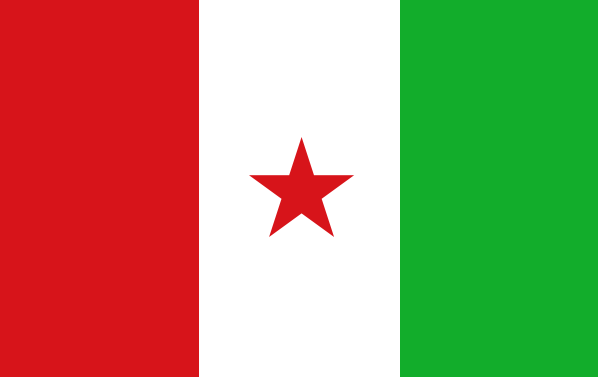
Just like ANP, PkMAP also emerged from the ashes of NAP. The red in its flag stands for revolutionary change; the white stands for peace; and green stands for economic progress. The red star stands for socialism.
PkMAP was the largest party in the 2013-2018 Balochistan provincial assembly.
Ideology: Progressivism/Pashtun Nationalism
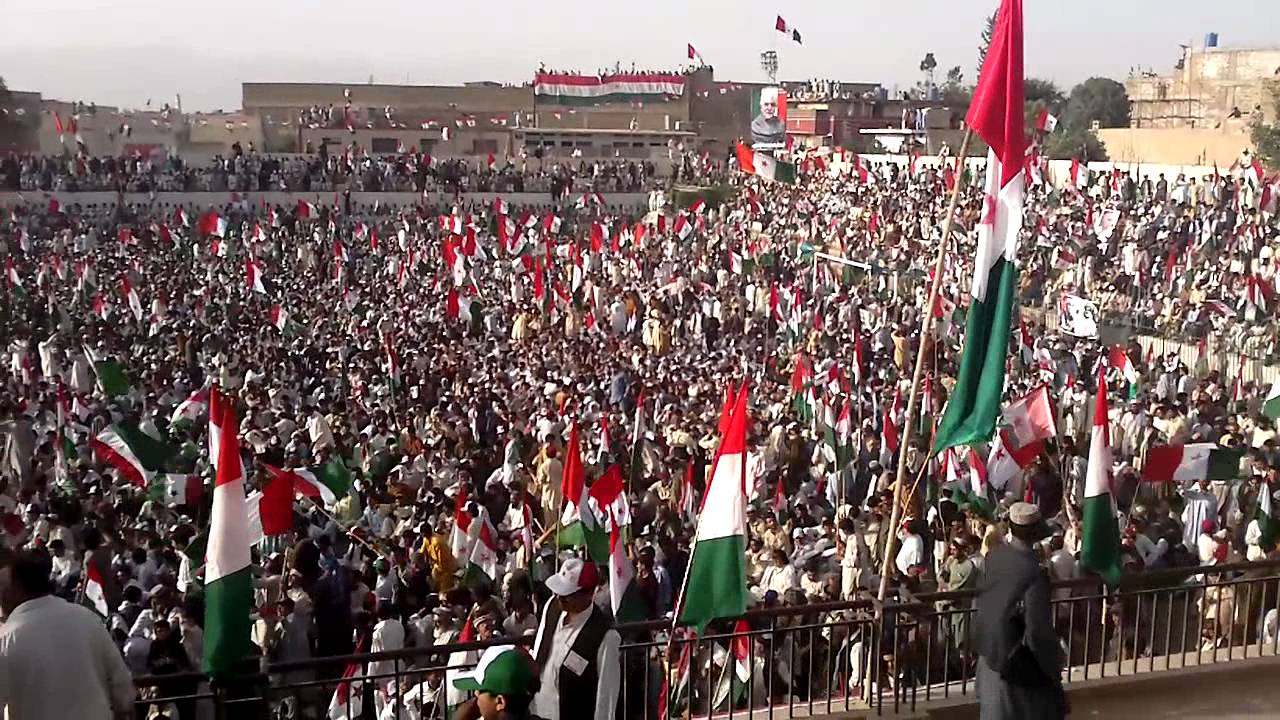
Balochistan Awami Party (BAP)
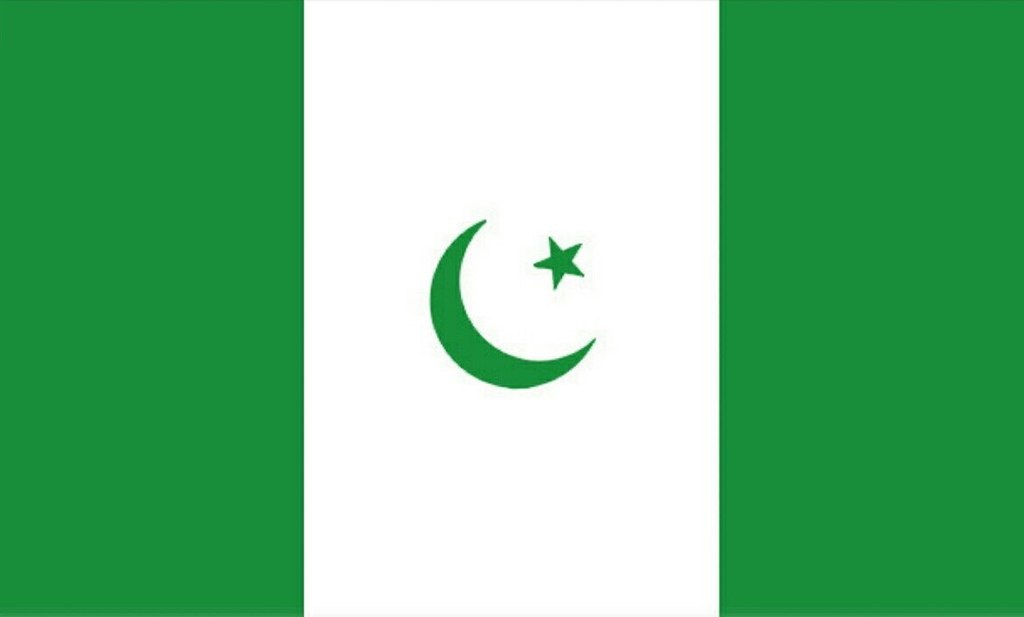
There are two green strips on BAP’s flag. The first connotes Muslim nationalism and the second, the natural resources of Balochistan. The white stands for peace and the green crescent and star symbolize Pakistani nationalism.
BAP heads the current provincial government in Balochistan and is a partner of the PTI-led coalition government at the centre.
Ideology: Centrist/Pakistani nationalism.
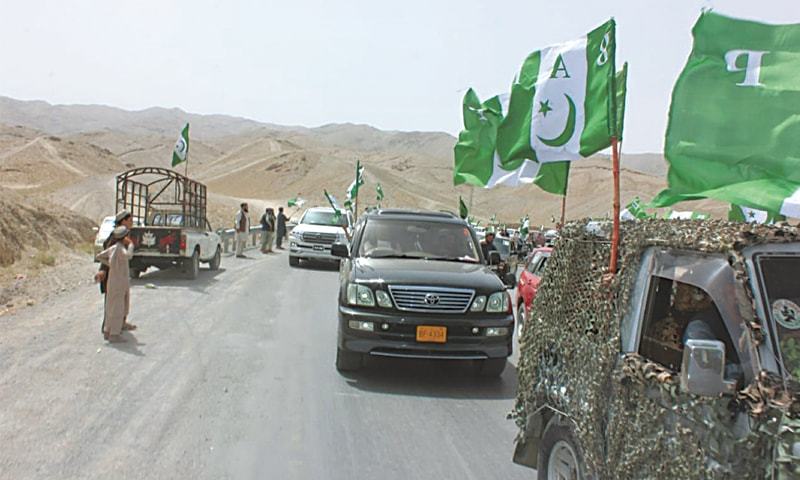
Tehreek-e-Labaik Pakistan (TLP)
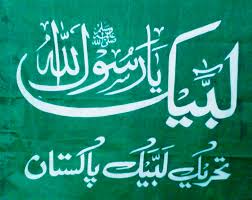
The green in TLP’s flag is inspired by dome of the Masjid-e-Nabwai – the mosque in Saudi Arabia said to have been built by Islam’s prophet (PBUH). The flag also has the first kalima and the party’s name written underneath it.
Ideology: Islamist (Barelvi)
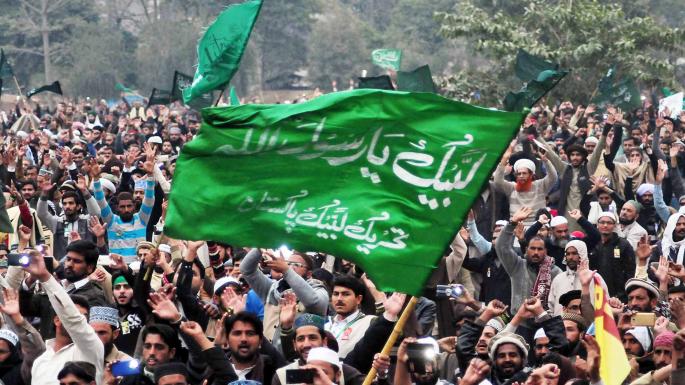
Awami Workers Party (AWP)
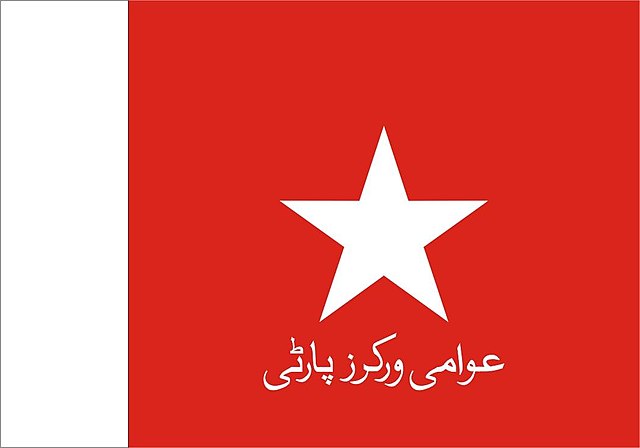
The red symbolizes workers’ struggle and the white strip stands for peace. The white star connotes democracy.
Ideology: Democratic Socialism.
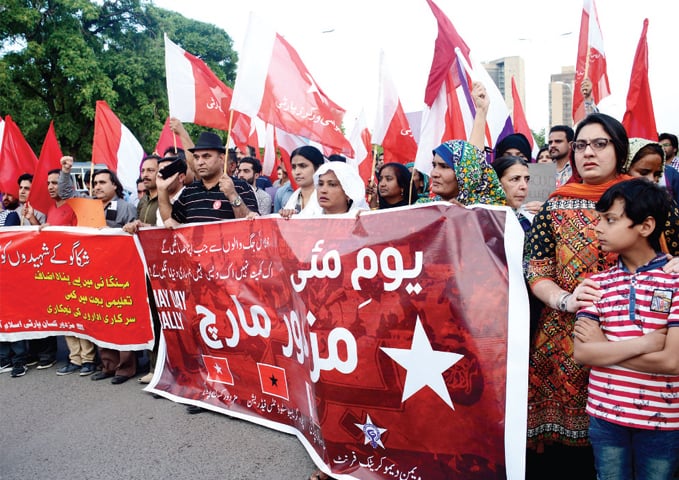
Hazara Democratic Party (HDP)
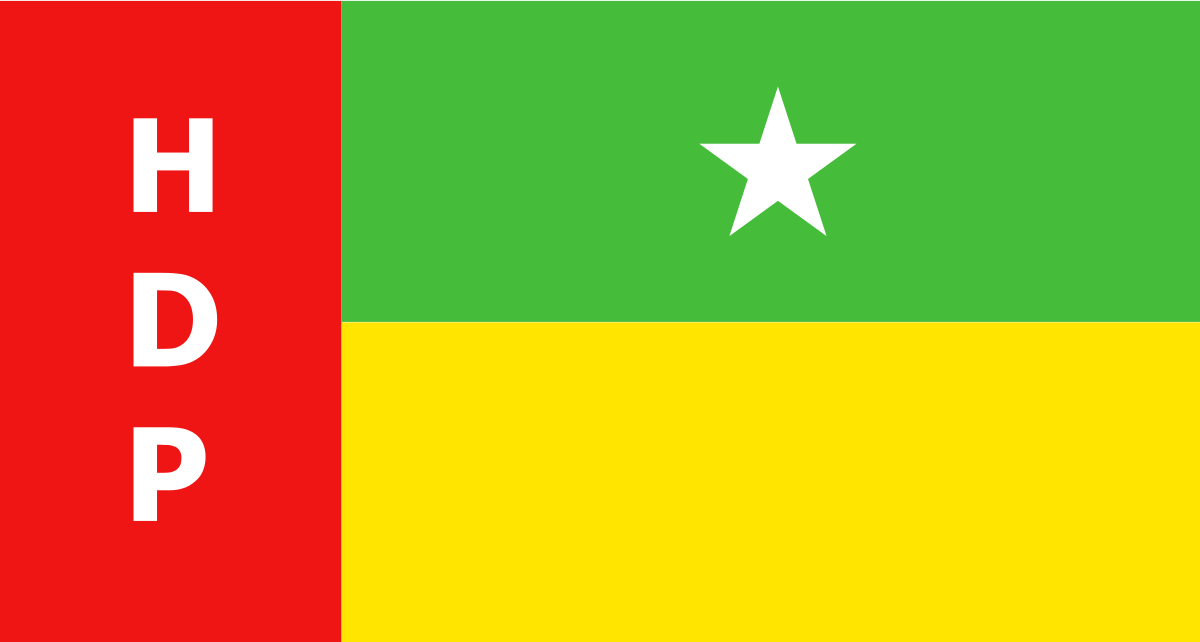
The red in the flag stands for struggle; the green connotes prosperity; and the yellow symbolizes the Hazara people. The white star connotes democracy.
During the 2018 election, HDP won two provincial assembly seats for the first time.
Ideology: Progressivism/Hazara people’s rights
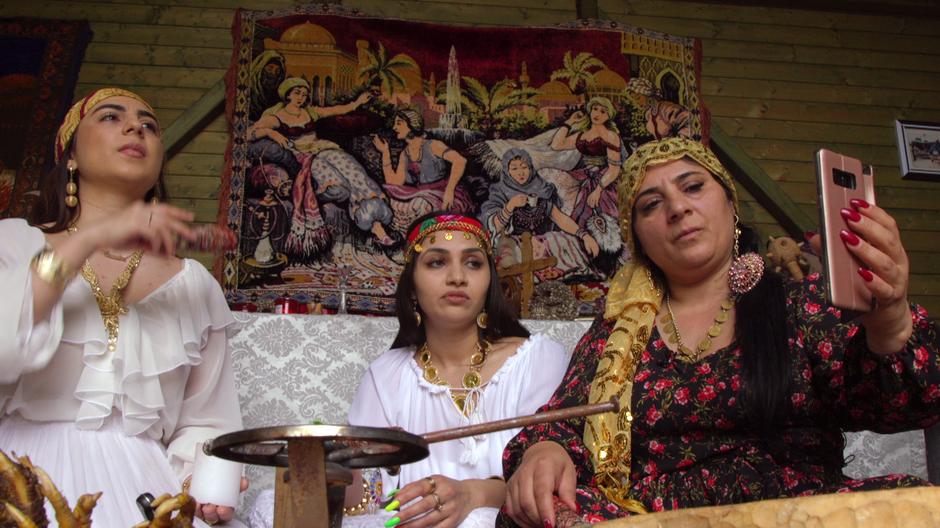
[1] Ministry of Information & Broadcasting, Government of Pakistan (March, 2009)
[2] Joe McMillian in Flags of the World (2003)
[3] Reality Behind Political Flags (Dunya, July 2018)
[4] Ibid.
[5] Ibid.
[6] Website: I own MQM (Feb. 6, 2011)
[7] Jaume Olle in Flags of the World (March, 2015)
[8] Reality Behind Political Flags (Dunya, July 2018)
The Pakistan flag was approved and adopted on August 11, 1947 during the session of the country’s first Constituent Assembly. The green in the flag stands for the country’s Muslim majority; whereas the thick white strip denotes rights of the country’s minority faiths. The white crescent and the star represent progress and enlightenment.[1]
The flag is a slight modification of the flag of the country’s founding party, the All India Muslim League.

Pakistan’s first PM Liquat Ali Khan waving the Pakistani flag in the Constituent Assembly in 1947.
Pakistan Muslim League-Nawaz (PML-N)

PML-N flag
The PML-N is the largest faction of the Pakistan Muslim League (PML) which was formed in 1985 by merging numerous factions of Muslim League (ML). ML was the country’s first ruling party before splintering into many factions from the mid-1950s. In 1992, PML chief, Nawaz Sharif broke away from PML to form his own faction, PML-N.
PML, like its predecessor, ML, had adopted the flag of the All India Muslim League (all green with a white crescent and star). PML-N added a tiger to it which has been PML-N’s election symbol from 1993 onward.
The green in the flag stands for Muslim majority; the star and crescent for progress; and the tiger for nobility.[2]
PML-N has thrice been Pakistan’s ruling party and has dominated the electoral politics of the country’s largest province, Punjab, ever since the early 1990s.
Ideology: Centrist/Moderate Right.

PML-N flag is a variation of the flag of the All India Muslim League.

Pakistan People’s Party (PPP)

The flag was adopted in late 1967 immediately after the formation of the party. Incidentally, it looked like the flags of Afghanistan and Libya. The Libyan flag, however, was changed in 1970 by Col. Qaddafi but has made a comeback after his fall from power in 2011.
The red in the PPP flag stands for socialism; the green stands for Muslim enlightenment; and the black stands for chaos![3] According to the party, the black will be removed from the flag once poverty and injustice are eradicated from the country.[4]
A white star and crescent are placed on the black strip to symbolize light overwhelming darkness. The white arrow has been PPP’s electoral symbol since 1988. Before the arrow, it used to be a sword. The sword symbolized bravery whereas the arrow symbolizes a rapid move forward.
The PPP has been Pakistan’s ruling party four times and has dominated electoral politics in Sindh since 1970.
Ideology: Left-Liberal.

The PPP flag had a sword on it till 1977.

Pakistan Tehreek-e-Insaf (PTI)

The flag was unveiled during PTI’s inception in 1996. The green in it represents the idea of Islamic welfare system and the red stands for revolutionary change. The crescent which appears on both the colours symbolizes different meanings. On green, it represents Pakistani nationalism, and on red it represent progress. The white star on green represents minority rights.[5]
PTI heads the current federal government in Pakistan. It also leads the provincial set-up in Punjab and Khyber Pakhtunkhwa.
Ideology: Centre-Right/Populist

In 1998, former president Farooq Laghari formed his own party, the Millat Party. Interestingly, the party adopted exactly the same colours that PTI did on its flag in 1996.

Muttahida Qaumi Movement (MQM)

The flag was adopted from the ensign of the party’s student wing, the APMSO. APMSO was formed in 1978. MQM was launched in 1984 by APMSO’s founders. The white in the flag stands for peace. The green stands for prosperity and fertility. And the red stands for the ‘sacrifices’ of Mohajirs (Urdu-speakers) who took part in the struggle for Pakistan’s creation.[6] A kite is often placed over the white. It has been MQM’s electoral symbol since 1988. It symbolizes flight towards progress.
MQM had been Karachi’s largest party between 1988 and 2013. It experienced severe splintering from 2015 onwards. It is currently part of the PTI-led coalition government in Islamabad.
Ideology: Liberal/Mohajir Nationalism

MQM’s flag is a variation of the flag of its student-wing APMSO which was formed in 1978.

Jamaat-e-Islami (JI)

The JI was formed in 1941. The colour blue dominated its flag till the late 1970s. It stood for Islamic enlightenment. Till the 1970s it also had a red/orange strip (revolution) and a green one (Islamic order). The flag went through a transformation in the 1970s. Green began to dominate (standing for Islamic system); the red strip was replaced by a white one (connoting the party’s non-sectarian outlook); and the colour blue was partially retained. Inspired by the flag of Saudi Arabia, Islam’s first declaration of faith (kalmia) was inscribed over the green.
Ideology: Islamist.

MQM’s flag is a variation of the flag of its student-wing APMSO which was formed in 1978.

The blue still dominates the flag of JI’s student-wing, the IJT. But kalima was added to it in 1980.
Jamiat Ulema Islam (JUI)

JUI explains the black and white stripes on its flag as the separation of truth (white) from false (black).[7] There are at least three factions of the JUI, JUI-F being the largest. All factions use the same flag.
Ideology: Islamist (Deobandi)

Awami National Party (ANP)

ANP was formed in 1986. It was a precursor of the National Awami Party (NAP) which was banned in 1975. Its flag is entirely red signifying progressivism. Till the 1990s it had signified socialism. Sometimes there is also the image of a lantern on the flag. The lantern is ANP’s electoral symbol. It symbolizes enlightenment.
ANP has thrice led the provincial government of the Khyber Pakhtunkhwa province.
Ideology: Progressivism/Pashtun Nationalism.

Grand Democratic Alliance (GDA)

GDA is an alliance led by a faction of the PML – the PML-Functional. It is made up of PML-F and small Sindhi nationalist and other anti-PPP parties in Sindh. The green in it stands for Pakistani nationalism whereas the white star denotes the unison of various parties that are part of GDA.[8]
GDA is part of the current PTI-led coalition government.
Ideology: Moderate Right.

Balochistan National Party (BNP)

Formed in the late 1990s, the red in BNP’s flag denotes Baloch nationalist struggle; the yellow stands for Balochistan’s natural resources; and the green symbolizes economic prosperity.
BNP led the Balochistan provincial government in the late 1990s. It is a partner in the current Balochistan provincial government, albeit a disgruntled one.
Ideology: Progressivism/Baloch Nationalism

Pakhtunkhwa Milli Awami Party (PkMAP)

Just like ANP, PkMAP also emerged from the ashes of NAP. The red in its flag stands for revolutionary change; the white stands for peace; and green stands for economic progress. The red star stands for socialism.
PkMAP was the largest party in the 2013-2018 Balochistan provincial assembly.
Ideology: Progressivism/Pashtun Nationalism

Balochistan Awami Party (BAP)

There are two green strips on BAP’s flag. The first connotes Muslim nationalism and the second, the natural resources of Balochistan. The white stands for peace and the green crescent and star symbolize Pakistani nationalism.
BAP heads the current provincial government in Balochistan and is a partner of the PTI-led coalition government at the centre.
Ideology: Centrist/Pakistani nationalism.

Tehreek-e-Labaik Pakistan (TLP)

The green in TLP’s flag is inspired by dome of the Masjid-e-Nabwai – the mosque in Saudi Arabia said to have been built by Islam’s prophet (PBUH). The flag also has the first kalima and the party’s name written underneath it.
Ideology: Islamist (Barelvi)

Awami Workers Party (AWP)

The red symbolizes workers’ struggle and the white strip stands for peace. The white star connotes democracy.
Ideology: Democratic Socialism.

Hazara Democratic Party (HDP)

The red in the flag stands for struggle; the green connotes prosperity; and the yellow symbolizes the Hazara people. The white star connotes democracy.
During the 2018 election, HDP won two provincial assembly seats for the first time.
Ideology: Progressivism/Hazara people’s rights

[1] Ministry of Information & Broadcasting, Government of Pakistan (March, 2009)
[2] Joe McMillian in Flags of the World (2003)
[3] Reality Behind Political Flags (Dunya, July 2018)
[4] Ibid.
[5] Ibid.
[6] Website: I own MQM (Feb. 6, 2011)
[7] Jaume Olle in Flags of the World (March, 2015)
[8] Reality Behind Political Flags (Dunya, July 2018)
